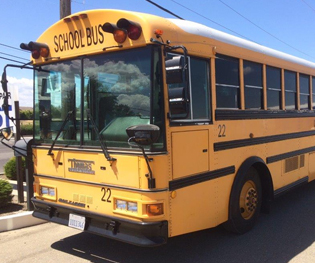Compliance Assistance
ARB provides compliance assistance to truckers through training, workshops, the Diesel hotline,
and by publishing factsheets and web-based materials. Assistance is available in English, Spanish,
and Punjabi.
Current Funding Opportunities
Available incentive programs include the Statewide truck loan assistance program for small fleets,
local Carl Moyer funding for clean truck vouchers (through air districts), and Statewide Carl Moyer
funding for clean log trucks. Additionally, the proposed regulatory changes below may provide
fleets new opportunities to access incentive funding.
Proposed Regulatory Changes (Public Hearing scheduled April, 2014)
Staff has proposed amendments that will better protect the emission and health benefits of the
regulation by providing new flexible compliance options for small fleets, low mileage fleets, and
fleets operated exclusively in certain areas that have made substantial progress towards cleaner
air. The proposed amendments will save affected fleets over $400 million in compliance costs
through 2023.
- Provide additional time for small fleets to meet the filter requirement
on their second and third truck to 2016 and 2018, respectively.
- Allow fleet owners, unable to qualify for a loan, to postpone compliance on up to three
trucks; then, by 2018, the fleet owner must replace the trucks with 2010 or newer engines.
- Spread out the filter phase-in requirements through 2018 for work
trucks that travel less than 20,000 miles per year.
- Increase the low-use exemption threshold for all trucks operating fewer than 5,000 total
miles per year until 2020, and remove hour limits on power take off (PTO) use for all trucks.
- Recognize additional areas that meet clean air standards (“NOx Exempt Areas”) and provide additional time for trucks operated exclusively in
these regions to install PM filters between 2015 and 2020.
- Recognize fleets that made early compliance investments by extending compliance credits.
In addition, fleets that retrofitted vehicles by 2014 can delay replacement until 2023.
- More gradually reduce the annual mile limitations for low-mileage agricultural vehicles.
- Provide additional compliance options for fleets that consist primarily of older trucks.
- Update the compliance options for heavy cranes, log trucks, and cattle livestock trucks.
A more detailed description on the proposed changes can be found on ARB’s website at
www.arb.ca.gov/truckstop
, as well as in the staff report supporting the proposed amendments.
The Board will consider the proposed amendments at its April 2014 meeting. Stakeholders are
encouraged to review the proposed amendments and provide comments on them. For more
information on the proposed amendments, or to submit comments on them, please see ARB’s
webpage at
www.arb.ca.gov/msprog/onrdiesel/amend14.htm
.
Public Health, Air Quality, and Climate Benefits of the Regulation
- Diesel trucks and buses are a significant source of harmful emissions. They contributed
to 43 percent of diesel PM and 29 percent of statewide NOx
emissions in 2010.
- Diesel PM is the largest contributor of known ambient air toxic cancer risk
in California. It also poses adverse health impacts, including increased
hospital admissions, asthma rates, and cases of acute bronchitis.
-
Regulation provides significant health benefits:
- Approximately 3,500 premature deaths statewide will be avoided
from successful implementation of the regulation.
-
The regulation, including the proposed amendments, is a key strategy in reducing
the potential cancer risks associated with diesel PM by 85 percent by 2020.
-
Regulation provides significant air quality benefits:
- Reductions provided by the regulation are necessary to meet the
national ambient air quality standards for PM2.5 by 2014.
-
Reductions in NOx
are necessary to meet the national
ambient air quality standards for ozone by 2023.
-
South Coast and San Joaquin Valley air basins most dependent on emission
reductions from trucks to achieve the national standards. The proposed amendments
better protects that the emission reductions needed in these areas are realized.
-
Regulation provides significant air quality benefits:
- Diesel engines are a source of black carbon, which increases climate warming,
accelerates ice and snowmelt, and disrupts precipitation patterns.
-
Annual black carbon emissions in California decreased about 70 percent between 1990 and
2010 because of ARB regulations related to diesel fuels, fleet rules and emissions standards.
Funding Provided to Date
- The Carl Moyer Program has provided $77 million in funding for
cleaner-than-required on-road engines and equipment.
- The Goods Movement Emission Reduction Program authorized by Proposition 1B funds
has provided trucks moving goods in California’s four primary trade corridors $332
million. In addition, $143 million in clean truck projects are currently being processed.
- The Statewide truck loan assistance program has provided $30 million through a loan
loss reserve account. This program helps higher risk borrowers qualify for loans.
For more information
Visit the Truck Stop at
www.arb.ca.gov/truckstop
, or call ARB’s Diesel Hotline 866-6DIESEL
To obtain this document in an alternative format or language please contact the ARB’s Helpline at (800) 242-4450 or at
helpline@arb.ca.gov
.
TTY/TDD/ Speech to Speech users may dial 711 for the California Relay Service.




